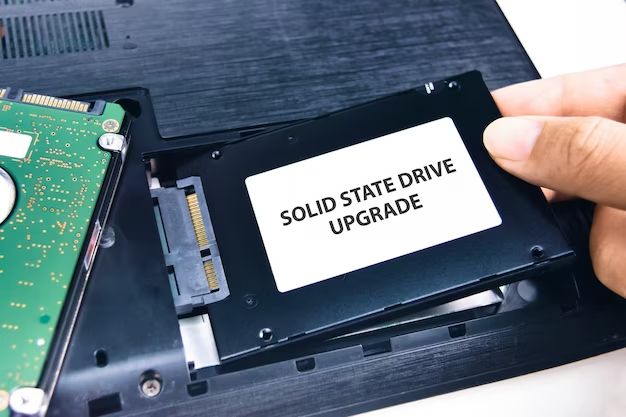Solid state drives (SSDs) have become a popular storage option for computers in recent years. SSDs offer faster read/write speeds, better reliability, and lower power consumption compared to traditional hard disk drives (HDDs). However, there is some debate around whether SSDs should be partitioned or not. Partitioning divides the storage space on a drive into separate logical sections. Some experts argue partitioning is unnecessary for SSDs and can even degrade performance. Others claim it still provides benefits. In this article, we’ll examine the key considerations around partitioning SSDs.
What is partitioning?
Partitioning splits a storage drive into multiple logical sections called partitions. Each partition acts as a separate volume that can have its own file system and operating system. Traditionally, partitioning was often used to:
- Allow multiple operating systems on one drive. Each OS could have its own partition.
- Separate types of data like applications, personal files, and system files.
- Limit how much space each partition has access to.
With HDDs, partitioning had some performance benefits. By dividing the drive into partitions focused on specific types of tasks, the read/write heads didn’t have to travel over the whole platter to access data. This reduced seek time. Partitioning also made data easier to back up and gave more flexibility to reorganize storage as needed.
Is partitioning necessary for SSDs?
Many experts argue that partitioning is largely unnecessary for SSDs for several reasons:
No seek time benefit
Unlike HDDs, SSDs have no read/write heads. They use microchips to store data electronically. This means there is no seek time to different parts of the drive. Data can be accessed quickly no matter where it is stored on an SSD. So partitioning doesn’t improve performance by reducing seek times.
Built-in partitioning
SSDs partitioning themselves behind the scenes using a process called overprovisioning. Extra flash memory capacity aside solely to manage performance. This acts similar to a partition, optimizing speed without user intervention.
Can reduce performance
Writing data randomly across an entire SSD delivers faster speeds than writing to a smaller partition. Keeping an SSD unpartitioned allows better distribution of writes across all the memory chips. Partitioning can isolate writes to a smaller portion of the SSD, reducing performance.
Wear leveling works best unpartitioned
To extend SSD lifespan, wear leveling ensures writes are spread evenly across all the memory cells. This avoids overuse of any one cell. Wear leveling algorithms work best when data is distributed over the entire SSD capacity. Partitioning may interfere with even wear.
Are there benefits to partitioning an SSD?
There are a few scenarios where partitioning an SSD may provide advantages:
Using multiple operating systems
If you need to dual boot operating systems, partitioning allows dedicating space for each OS installation. This keeps them separate and avoids conflicts.
Organizing data by type
Partitioning to group specific datasets together can help organize storage. For example, having partitions for applications, system files, user documents, etc.
Isolating sensitive data
Partitioning can cordon off secure data like financial info in its own partition. This separates it from the OS for added safety.
Quick formatting/repartitioning
Formatting or repartitioning an entire drive can take time. With partitions, you can quickly reformat or reconfigure just one section as needed.
Limiting partition size
Creating a partition smaller than the full SSD capacity lets you limit how much space that data can consume. This reserves free space for other uses.
Tips for partitioning an SSD
If you do choose to partition an SSD, here are some best practices:
- Keep the number of partitions low – 2-3 at most.
- Don’t make disks smaller than about 100GB if possible.
- Align partitions properly on 4k sector boundaries.
- Leave at least 10% free space for wear leveling.
- Use partitioning software designed for SSDs, not HDDs.
- Don’t defragment SSD partitions.
Proper partition alignment and minimizing partition count will limit any negative performance impact. Leaving ample free space allows wear leveling to work efficiently.
Using multiple drives instead of partitions
For some users, a better solution than partitioning one SSD is using multiple SSDs. With each drive dedicated to a specific function, you get the organizational benefits of partitioning without limitations on write distribution. OS and programs on one SSD, documents on another, etc. This avoids any partitioning drawbacks but lets you separate data categories. The downside is added cost of multiple SSDs.
Conclusion
Partitioning SSDs has fewer benefits than with HDDs due to the fundamental differences in how the technologies work. Drawbacks like reduced speeds and interference with wear leveling often outweigh the minor advantages of partitioning SSDs. However, partitioning might still make sense in certain cases like dual booting operating systems. For most SSD users though, leaving the drive unpartitioned or using multiple SSDs delivers optimal performance. As with any storage decision, evaluate your specific needs and use patterns when determining if partitioning is right for your SSD.
